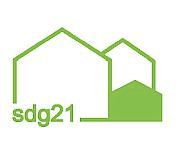 Stadtwerke Herne is planning to build a climate-friendly and car-free housing estate with an innovative energy concept in Sodingen: seven detached single-family homes are being built in Baueracker, which will be largely self-sufficient in terms of energy. The building permit is expected before the end of this year. The groundbreaking ceremony is scheduled for early 2018. The first families are expected to move in in February 2019.
Stadtwerke Herne is planning to build a climate-friendly and car-free housing estate with an innovative energy concept in Sodingen: seven detached single-family homes are being built in Baueracker, which will be largely self-sufficient in terms of energy. The building permit is expected before the end of this year. The groundbreaking ceremony is scheduled for early 2018. The first families are expected to move in in February 2019.
Whether heating, electricity or hot water - the houses are to produce almost all the energy they need themselves from renewable sources. A large photovoltaic system on each roof and a battery storage system are the basis for this. Geothermal and air-source heat pumps are combined with these. The result is a variety of energy concepts developed by Smart-Tec, the municipal utility's heating service. Smart-Tec also supplies the technology and ensures smooth operation.
At the heart of the project is a new type of electricity storage, the so-called redox flow battery. It has extremely low energy losses and can be recharged almost indefinitely. "This concept is unique in Germany," knows Stephan Becker, who is responsible for the project at the municipal utility. This is why the construction project also successfully qualified for the "EnergyEnvironmentEconomy.NRW" lead market competition organized by the state and the EU. Fraunhofer UMSICHT is providing scientific support.
In addition to the energy concept, car-free living is also a special feature in Herne. Cars are parked outside the settlement in a solar garage. "This makes the settlement safe and child-friendly, and there is also nothing to prevent the purchase of an electric car," Becker continues.
Construction/building materials: heated full basement, timber frame construction, 100 % styrofoam-free
Architect's office AGIS
The detached single-family homes have a living area of around 120 square meters. The plot size starts at 215 square meters. Building-willing can announce themselves already now under telephone 02323/592-315 or autark-wohnen@stadtwerke-herne.de apply, as a large response is expected. Detailed information will be available after the summer holidays.
Link with photo:
https://klimaviertel.stadtwerke-herne.de/
Keywords: Energy storage, News Blog NRW, PV, PlusEnergy house/settlement, Settlements

